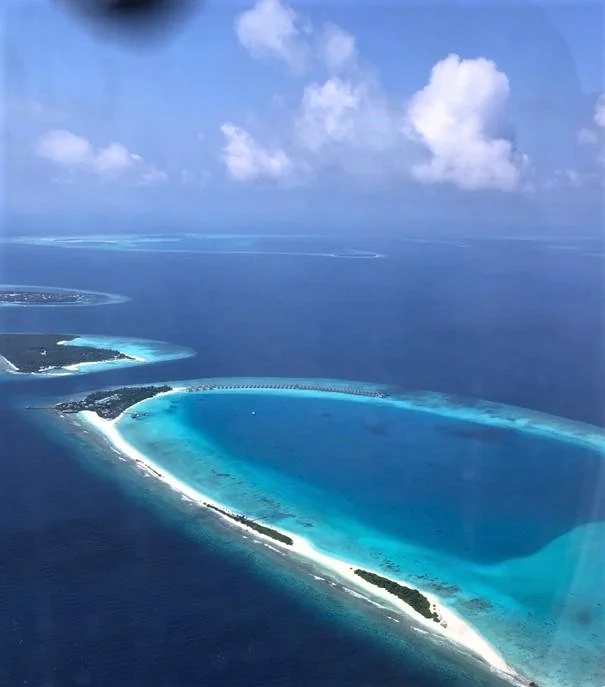Lagoon Reclamation and Development Standards
Lagoon Reclamation and Development Standards [Key words: Lagoon – Reef - Reclamation – Development - MOT standards – Policy]If you are contemplating a tourism project that may potentially include reclamation or development of structures in a lagoon, this article will provide some high level guidance on relevant regulatory processes that you may encounter along the way.Often there is confusion if a lagoon may actually be allowed to be reclaimed or developed. There are varying answers. According to some, the government is against reclamation, and does not allow lagoons to be reclaimed for resort development. Others hold that the government may allow lagoon reclamation in exceptional circumstances.So far there is nothing formally published on the subject by the Ministry of Tourism. However, we understand that they do adhere to some policy framework developed internally and the correct position on lagoon development falls somewhere in the middle of those two extreme arguments.We did some work to understand the policy framework the Ministry of Tourism has on reclamation and/or development of structures in lagoons.Regulatory FrameworkThe Ministry of Tourism does actually have a detailed policy framework on tourism development in lagoons.The policy is consistent with powers vested (or to be vested) in the government under three key pieces of legislation. Two of them are already in force: One is obviously the Environmental Protection Act and the other is naturally the Tourism Act. The third to be included in the list shortly would be the Land Use Plan Act. At the moment this is only in bill form waiting to be born as law. However, it is evident that the Ministry of Tourism’s policy framework already takes account of principles outlined in this bill.Who decidesAs is the case with land and islands leased for tourism development, lagoons proposed to be reclaimed/developed into tourism establishments (or part of them) would be decided by the President.His decision will be prompted by a strategic environment assessment undertaken with a view to upholding three key principles:
- reducing adverse environmental impact caused by reclamation of lagoons;
- minimizing number of lagoons exploited for various purposes including tourism; and
- achieving development that is both friendly and sustainable from an environment perspective.
Lagoon typesThe current policy framework divides lagoons (reefs as they call it) into three separate kinds:
- a single reef system (also called shallow lagoons) with a vegetated island or more islands;
- a reef system with a sandbank (Finolhu) or rubble bank (Huraa); and
- a reef system without any land mass of any form.
Untouchable lagoonsNo reclamation or development of whatsoever nature may be had in any of the following types of reef systems.
- an environmentally protected area;
- an environmental heritage site; and
- an environmentally sensitive area.
If the proposed lagoon falls within a buffer of at least 500 meters within any of those areas, an assessment according to EIA regulations would be required.Planning processesNo lagoon may be approved for tourism related reclamation or development unless all the following processes are completed:
- It has an approved concept plan that is consistent with the development controls contained in the policy framework of the Ministry of Tourism;
- An environment management plan is submitted along with the proposed concept plan.
- The management plan among other things includes project feasibility; socio-economic assessment; purpose and need; proposed action and alternatives; description of the affected environment; expected impacts; consultation and coordination mechanisms; and a socio economic and land use pattern analysis.
It may additionally be noted that if the proposed lagoon is a reef system with an island (that is either inhabited, industrial in nature, or economically active), information on all socio economic and land use contacts ought to be compiled.All geospatial and geographic details on the proposed lagoon must be gathered and mapped before work is undertaken to reclaim the lagoon.Standards created by the Maldives Land Survey Authority ought to be used as the survey yardstick to carry out data collection and compilation of the plan.All survey related images must clearly identify the location of the proposed project.Detail such as geomorphic zonation; environmental heritage/conservation areas; environmentally sensitive areas; environmentally significant areas such as protected diving surfing points; areas identified for fishing or bait-fishing are to marked in the survey related mapping.It may be noted that geomorphic zones of a lagoon are marked based on the manner in which reef systems are ordinarily formed in the Maldives.The policy framework spells out some eight distinct zones (or parts) of a lagoon or reef.The eight zones are: Zone A (deep sea); Zone B (reef slope); Zone C (reef crest); Zone D (outer reef flat); Zone E (inner reef flat); Zone F (shallow lagoon); Zone G (deep lagoon); and Zone H (land).Development ControlsIf a lagoon is being reclaimed for tourism purposes, the development may not exceed 60% of available area of its shallow lagoon. Additionally, reclamation may only occur within 30% of the same available area of the shallow lagoon.Even if reclamation is limited to 30% of the available area, the rest of the 30% within the development cap of 60% may still be used for development of overwater villas, jetties, platforms, walkways, and such restricted facilities – that also in a manner that is least disruptive to the environment.Even if the available areas are narrower than 100 meters, reclamation may still not be permitted in those areas – and only overwater development may be created there – provided there is a minimum distance of 10 meters from the outer reef flat.Restricted structures may be erected in the outer reef flat. This too will be sanctioned only if there is no impediment to development based on an environmental impact assessment.Restricted structures may include piers, jetties, walkways, gangways, boathouses, diving sheds, recreational or swimming platforms.If there is any adverse impact on the environment due to a project, an environment management plan ought to be formulated to address recovery from adverse impacts caused by the project.Monitoring Authorities Since the policy framework stands on powers vested in three separate pieces of legislation (and therefore three separate agencies of the government), each of those agencies will continue to be responsible to monitor their respective functions in relation to development undertaken according to the current policy framework. By MNPhoto: Courtesy A S Hassan


